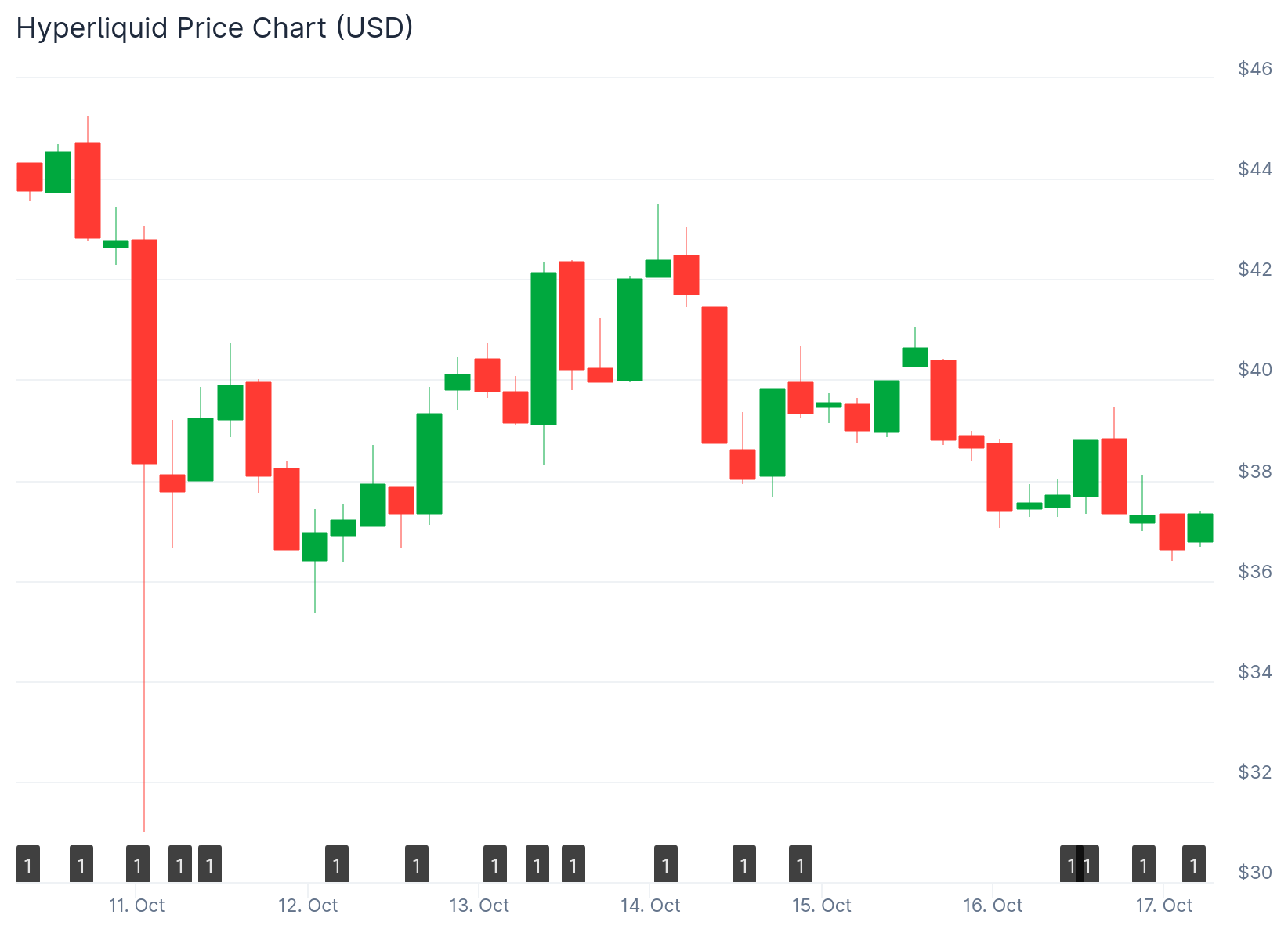TLDR
- 21Shares submitted an SEC filing for a 2x leveraged Hyperliquid ETF that doubles daily exposure to the HYPE token
- Bitwise and VanEck previously filed for their own HYPE ETF products, creating competition among asset managers
- Hyperliquid processed a $10 billion market selloff while its HLP system generated $40 million in profits
- Jump Trading’s president described Hyperliquid as Binance’s first real competitor at a Wall Street summit
- The platform’s new HIP-3 upgrade enables users to launch perpetual futures markets without approval
21Shares filed an application with the US Securities and Exchange Commission for a 2x leveraged Hyperliquid ETF. The product aims to deliver double the daily returns of the Hyperliquid Index.
The proposed fund would amplify investor exposure by 200%. This creates a high-beta option for traders looking to maximize gains from Hyperliquid’s on-chain activity.
Bloomberg ETF analyst Eric Balchunas called the filing “so niche it might just win.” He drew comparisons to early smart beta and currency-hedged product launches.

If the SEC approves the application, it would become the first US-listed leveraged ETF tracking a live DeFi protocol. The structure relies on swaps rather than direct custody.
Analysts project the initial capacity could range from $500 million to $1.5 billion. The final size depends on liquidity conditions in HYPE token markets.
21Shares recently launched its DOGE ETF on the DTCC platform. The firm also listed a HYPE ETP on the SIX Swiss Exchange in Europe for institutional investors.
Asset Managers Race for Hyperliquid ETF Products
The 21Shares filing joins applications from two other major asset managers. Bitwise filed for an HYPE ETF last month that holds tokens directly.
The Bitwise product features in-kind creation and redemption. Investors can exchange shares for actual HYPE tokens instead of cash.
VanEck applied for a spot staking Hyperliquid ETF in the US and Europe. The company plans to integrate staking yields and HYPE buybacks based on fund performance.
Traditional finance firms are backing Hyperliquid through various channels. Paradigm supported an $888 million Nasdaq-listed fund holding HYPE tokens for institutional exposure.
The fund’s board includes Eric Rosengren, former president of the Boston Federal Reserve. David Schamis of Atlas Merchant Capital serves as CEO.
Platform Handles $10 Billion Selloff While Gaining Attention
Hyperliquid recently processed a $10 billion market selloff that shocked crypto traders. The platform maintained operations throughout the event.
A 15-person team in Singapore built and operates the two-year-old decentralized exchange. Despite its size, Hyperliquid has surpassed Coinbase in certain metrics.
Jump Trading president Dave Olsen named Hyperliquid as “the first meaningful competitor” to Binance. He made these comments at a Coinbase summit attended by BlackRock and Coatue executives.
The platform uses a Hyperliquidity Provider system with over $500 million in user deposits. HLP serves as an automated trading vault that continuously posts buy and sell quotes.
During the recent selloff, the HLP generated $40 million while traders faced liquidations. The platform’s auto-deleveraging system managed losses by reducing profitable positions.
Hyperliquid operates with 24 validators compared to Ethereum’s one million. The Hyper Foundation controls nearly two-thirds of staked HYPE tokens.
The platform uses trading fees to buy back HYPE tokens through its Assistance Fund. This fund has accumulated a $1.4 billion reserve.
New Upgrade Expands Platform Capabilities
Hyperliquid’s HIP-3 upgrade recently went live on the platform. The update allows qualified builders to create perpetual futures markets without central approval.
Users must stake millions in HYPE as collateral to launch custom markets. Validators can slash these funds if they detect abuse.
Over 100 projects are now building on Hyperliquid according to DefiLlama data. This puts the platform alongside BNB Chain and Solana in terms of ecosystem growth.
Hyperliquid Labs informed the US Commodity Futures Trading Commission that its perpetuals meet or exceed US market safeguards. The platform’s front end blocks US users, but anyone can trade directly on-chain.



